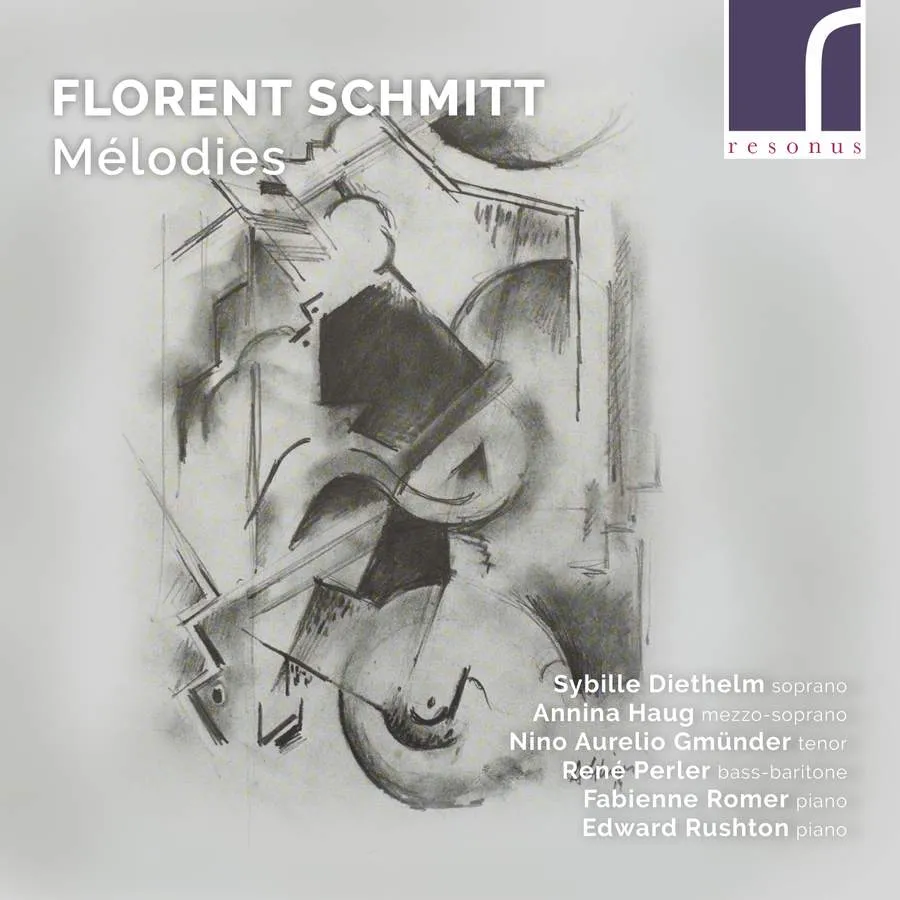
Schmitt Mélodies – Chansons à quatre voix, Op. 39; Quatre Lieds, Op. 45; Kerob-Shal, Op. 67; Trois Mélodies, Op. 4; Deux Chansons, Op. 18; Quatres Poemes de Ronsard, Op. 100; Trois Chants, Op. 98 Sybille Diethelm (soprano), René Perler (bass-baritone), Nino Aurelio Gmünder (tenor), Annina Haug (mezzo-soprano), Fabienne Romer, Edward Rushton (piano) Resonus Classics RES10265 71:00 mins
Four young, clear voices and two excellent pianists make a fine start to this long-awaited disc – the first of Florent Schmitt’s songs for as long as I can remember. The seven sets, covering the years 1895 to 1943, give a good idea of how Schmitt’s music developed while retaining the complexity that he always favoured. Sometimes he went a bit far. The first set, from 1905, includes not only piano duet accompaniment but, in the fifth song, the four verses of the poem sung simultaneously by the four artists: an interesting experiment, perhaps inspired by Mozart’s operatic finales – but there of course we have the plot and known characters to guide us.
I can’t say I was at any moment bowled over and there are no great tunes. But the textures supporting the general arioso lines have their own interest, while for me the simpler songs, such as the second of the four Lieds, Op. 45 come over best. After the First World War his harmonies became leaner, often bordering on the atonal, and his control here is impressive.
My only real disappointment is with the French of the German Swiss singers, in which the closed ‘e’ of ‘delight’ frequently becomes the open ‘e’ of ‘destiny’, with nasal vowels also causing problems. One of the most enjoyable items is the second of the two Chansons of 1901, a lusty Breton song providing a sort of link between Chabrier and Poulenc. But I shall persevere with the rest: Schmitt’s music doesn’t give up its secrets easily.
Roger Nichols